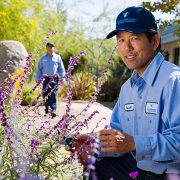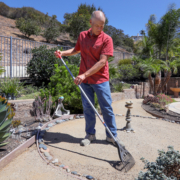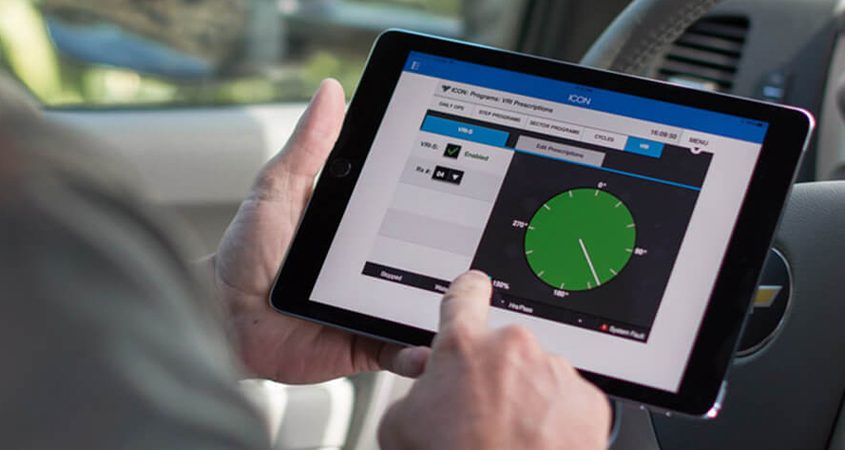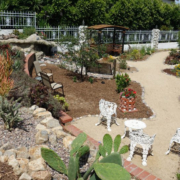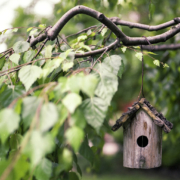Water Industry Landscape Maintenance Pros Ensure Safety and Preserve Habitats
The San Diego region’s future depends on water. The San Diego County Water Authority and its 22 member agencies depend on the skill and dedication of all their professionals to provide a safe, reliable water supply to support the region’s economy and the quality of life of its residents.
Professional landscape maintenance personnel play a vital role in the water industry in San Diego County, overseeing environmental stewardship, water conservation, and the preservation of habitats and ecosystems.
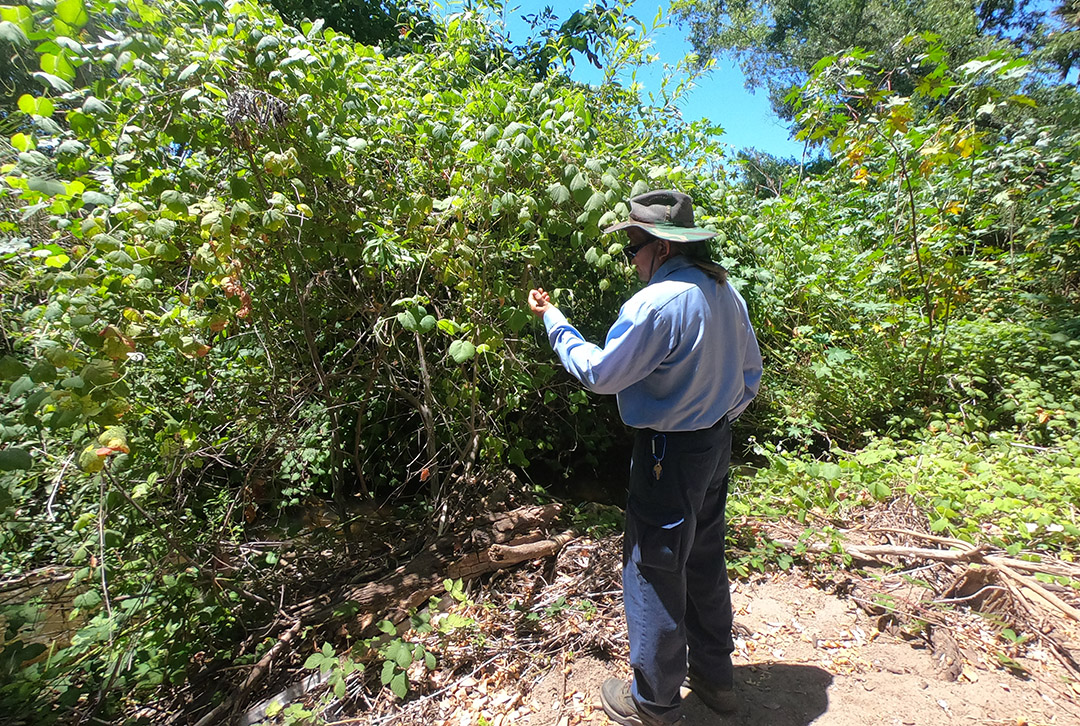
Russ Kubota helps maintain the vegetation and habitat throughout the Vallecitos Water District, including easements, and ensures accessibility to key facilities, including pipelines, tanks, and reservoirs. Photo: Vallecitos Water District
Russell Kubota has dedicated 23 years to his work as a Landscape Maintenance Worker II with the Vallecitos Water District. Kubota helps maintain the vegetation and habitat throughout the district, including easements and ensures accessibility to key facilities, including pipelines, tanks, and reservoirs.
Kubota has a degree in ornamental horticulture and two licenses from the California Department of Pesticide Regulation, allowing him to use herbicides when required to help manage the district’s environment. He has worked in the Conservation Department, performing irrigation audits, and represented the district performing outreach at events such as the San Marcos Street Fair, educating the public on water conservation.
See Kubota at work in this video.
District Safety Comes First
Currently, Kubota focuses on maintaining a fire-safe, ecologically healthy ecosystem throughout the Vallecitos Water District, covering approximately 1,989 acres in north inland San Diego County.
Safety is a key responsibility. “In the event of an emergency or even for routine maintenance, one of the biggest reasons I have to maintain the vegetation around our facilities is for safety,” said Kubota. “Being able to easily access and work around our equipment without being exposed to any hazards like rattlesnakes or bees.”
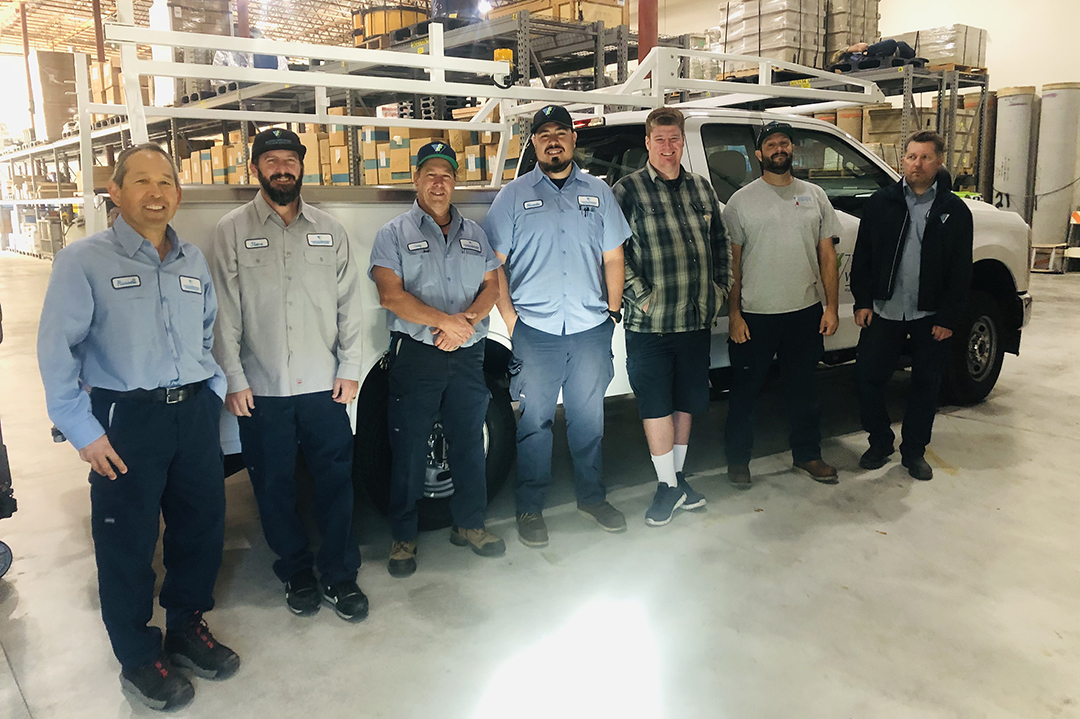
Russ Kubota and his team at the Vallecitos Water District work with the California Department of Forestry (CalFIRE), which helps provide personnel for vegetation management through its inmate firefighter program. Photo: Vallecitos Water District
Kubota coordinates this effort with the California Department of Forestry (CalFIRE). CalFIRE helps provide personnel for vegetation management through its inmate firefighter program, officially called the “Conservation (Fire) Camp Program.” It is run by the California Department of Corrections and Rehabilitation (CDCR).
Kubota says he’s grateful for the opportunity to work with the program participants. “Because all these areas are part of public infrastructure, the inmates receive time off from their sentences for community service.”
Landscape Maintenance Preserves Ecosystem
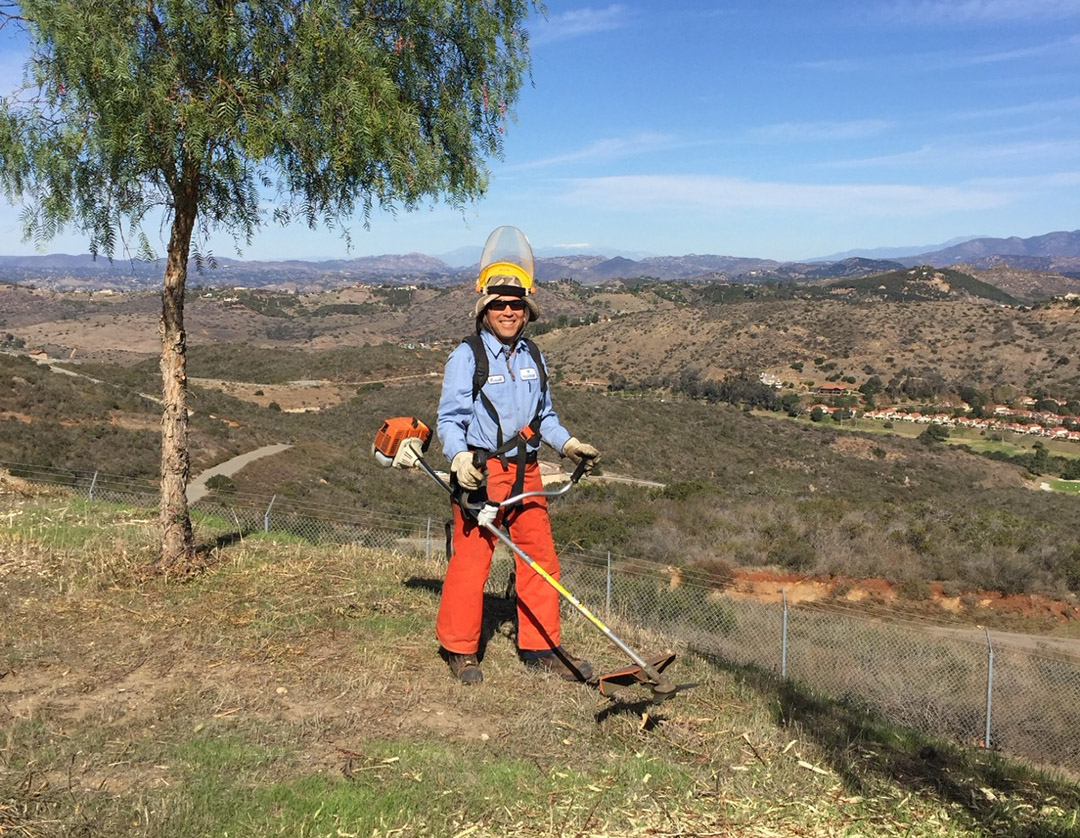
Monitoring and removing invasive plant species is a key responsibility for Russ Kubota. Photo: Vallecitos Water District
Kubota oversees the removal of non-native plants that are flammable and invasive, such as eucalyptus, castor bean, pampas grass, and salt cedar.
“Many areas of our district are near environmentally sensitive habitat. I always try to be aware of all the different types of plants and animals that are in our easements and right of ways,” said Kubota.
Kubota says he enjoys being outdoors, working in the many beautiful areas of the district. “I’m outside all the time, out in the fresh air, and we have lots of wildlife out here and a lot of natural vegetation like our oak trees. It’s just a beautiful place to work.”
Kubota says he hasn’t considered retiring because he gets to work outdoors and with people who are equally dedicated to their jobs at the Vallecitos Water District. It also doesn’t hurt that his job gives him time to surf in the morning before work.
“I really do enjoy the people I work with. I love the job sites that I go to. I love the entire work environment here at Vallecitos,” said Kubota.

